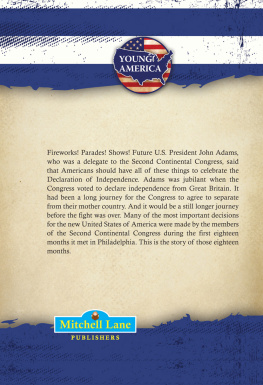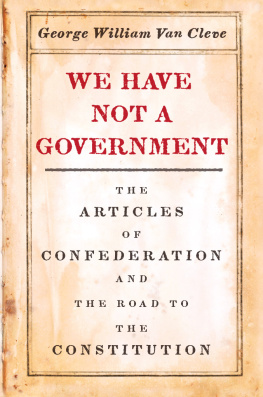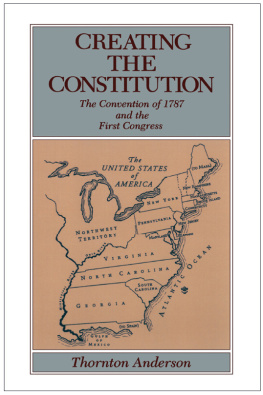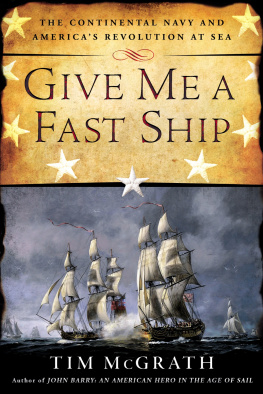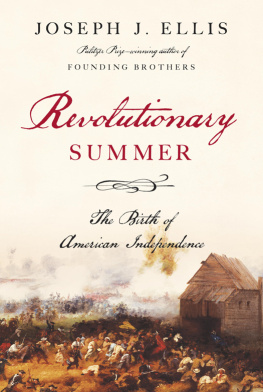Bonnie Hinman - The Second Continental Congress
Here you can read online Bonnie Hinman - The Second Continental Congress full text of the book (entire story) in english for free. Download pdf and epub, get meaning, cover and reviews about this ebook. year: 2019, publisher: Mitchell Lane, genre: Politics. Description of the work, (preface) as well as reviews are available. Best literature library LitArk.com created for fans of good reading and offers a wide selection of genres:
Romance novel
Science fiction
Adventure
Detective
Science
History
Home and family
Prose
Art
Politics
Computer
Non-fiction
Religion
Business
Children
Humor
Choose a favorite category and find really read worthwhile books. Enjoy immersion in the world of imagination, feel the emotions of the characters or learn something new for yourself, make an fascinating discovery.
- Book:The Second Continental Congress
- Author:
- Publisher:Mitchell Lane
- Genre:
- Year:2019
- Rating:5 / 5
- Favourites:Add to favourites
- Your mark:
- 100
- 1
- 2
- 3
- 4
- 5
The Second Continental Congress: summary, description and annotation
We offer to read an annotation, description, summary or preface (depends on what the author of the book "The Second Continental Congress" wrote himself). If you haven't found the necessary information about the book — write in the comments, we will try to find it.
Tells the story of the convention including events that led up to the Second Continental Congress.
The Second Continental Congress — read online for free the complete book (whole text) full work
Below is the text of the book, divided by pages. System saving the place of the last page read, allows you to conveniently read the book "The Second Continental Congress" online for free, without having to search again every time where you left off. Put a bookmark, and you can go to the page where you finished reading at any time.
Font size:
Interval:
Bookmark:
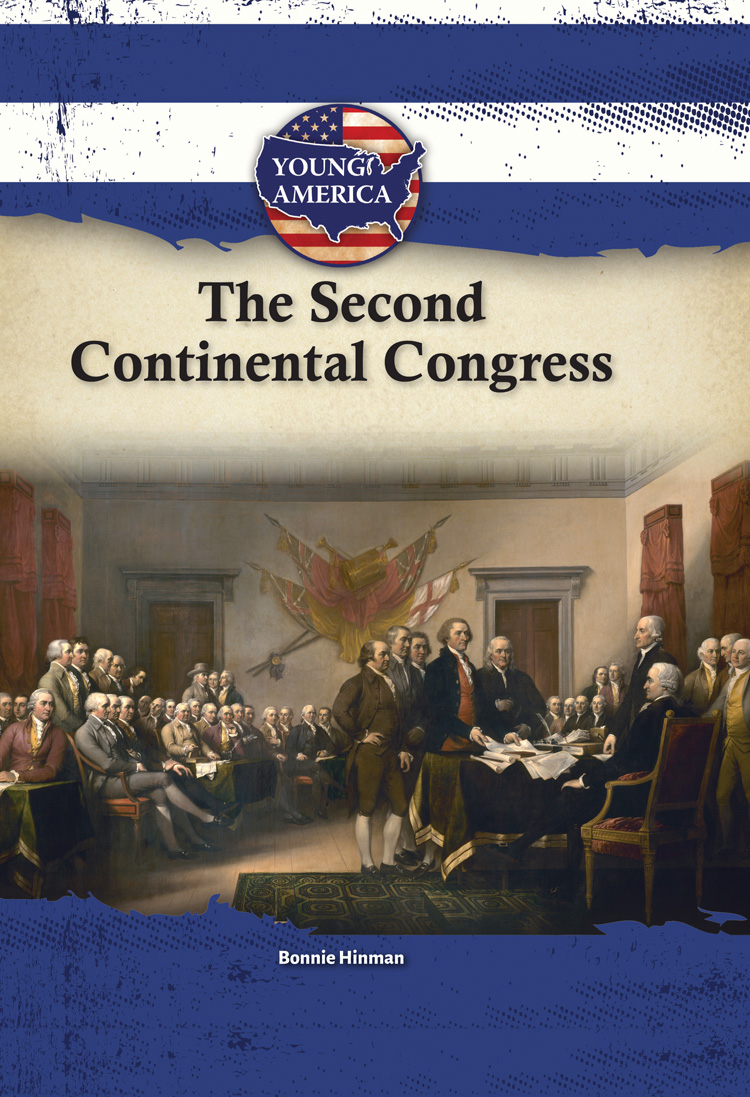


Copyright 2018 by Mitchell Lane Publishers. All rights reserved. No part of this book may be reproduced without written permission from the publisher. Printed and bound in the United States of America.
Printing 1 2 3 4 5 6 7 8

The First Continental Congress
The French and Indian War
Life in the Original 13 Colonies
The Second Continental Congress
The Signers of the Declaration of Independence
Stamp Act Congress
The Story of the Declaration of Independence
An Overview of the American Revolution
Library of Congress Cataloging-in-Publication Data
Names: Hinman, Bonnie, author.
Title: The second Continental Congress / by Bonnie Hinman.
Description: Hallandale, FL : Mitchell Lane Publishers, [2018] | Series: Young America | Includes bibliographical references and index. | Audience: Ages 9-13. | Audience: Grades 7-8.
Identifiers: LCCN 2017009125 | ISBN 9781612289793 (library bound)
Subjects: LCSH: United States. Continental CongressHistoryJuvenile literature. | United StatesPolitics and government1775-1783Juvenile literature. | United StatesHistoryRevolution, 1775-1783Juvenile literature.
Classification: LCC E303 .H587 2018 | DDC 973.3dc23
LC record available at https://lccn.loc.gov/2017009125
eBook ISBN: 978-1-5457-4615-8
CONTENTS
Words in bold throughout can be found in the Glossary.

King George III was the King of England before, during, and after the Revolutionary War. After the American colonies were lost, Georges popularity fell. In 1788, George suffered through an episode of insanity. He eventually recovered but had recurrences of the illness for the rest of his life. He is often called Mad King George.
Stamp Acts and Tea Parties
S ometimes the sequel to a movie or book is not nearly as good as the original. That wasnt the case when the Second Continental Congress met in 1775, less than a year after the First Continental Congress had adjourned. As it turned out, there was even more excitement for the Second Congress and more than enough originality. The sequel to the First Continental Congress gave birth to the United States.
In 1775, the American colonies had existed under British rule for many years. For almost that entire time, the colonies and Great Britain got along just fine. Britain set some restrictions on the colonies and charged certain taxes. However, they hadnt made much of an effort to enforce the restrictions or collect the taxes.
Everything began to change after the French and Indian War ended in 1763. Though Britain won the conflict, it was deeply in debt for the costs of the fighting. King George III and the British Parliament decided that the American colonies should help pay this debt.
Most Americans were loyal to their king and mother country. But when the king and Parliament began to pass new taxes and trade restrictions, the colonists grumbled, complained, and protested.
Stamp Act
The best-known of these new taxes was the Stamp Act. Passed by Parliament in March 1765, the Stamp Act required that colonists purchase special stamps for all legal documents and a variety of other printed materials. Specially appointed collectors would sell these stamps.
Historian Edmund Cody Burnett wrote of the Stamp Act, A big lump of fat had been thrown into the fire, with the result that there was soon much sizzling. Protests broke out in the colonies. In October 1765, representatives of nine colonies met in New York for the Stamp Act Congress. The representatives agreed that Parliament was taxing the colonies without the colonies having any say in the matter.
The Act was supposed to go into effect November 1, 1765, but colonists staged public demonstrations against it. On that day stamp collectors stayed home, and there were barely any stamps for sale.
Meanwhile, Parliament was rethinking its strategy. In January 1766 it repealed the Stamp Act. At the same time, it voted to give itself supreme authority over the colonies. Parliament particularly wanted to control trade.
Several years went by as Britain imposed first one restriction then another on the colonies trade. There were import duties on incoming goods and rules about where American raw materials and products could be exported.
Boston Tea Party
The pot of simmering anger against all of these restrictions eventually boiled over in Boston in December 1773, when the Boston Tea Party took place. According to the
Many colonists were already buying tea smuggled in from Holland and paying no taxes at all. Smuggled tea was cheaper. The prospect of higher prices was alarming.
The Sons of Liberty were a secret Boston organization of patriots. Samuel Adams led other members in dressing up as Indians and swarming aboard East India Company ships in Boston Harbor as they waited to be unloaded. The Indians dumped the tea overboard.
Parliament fumed over this action and in spring of 1774 passed what the colonies called the Intolerable Acts. Many of these Acts carried harsh penalties for Massachusetts. Boston had to repay the East India Company for the tea

The destruction of the tea in Boston Harbor came to be called the Boston Tea Party. The British government was shocked by the actions of the colonists. King George III was determined to punish Boston and the whole colony of Massachusetts for this act.
Boston refused to pay for the tea, and the harbor was closed on June 1. With the Stamp Act Congress in mind, colonial leaders decided to meet in Philadelphia. They hoped to find a solution to the problems in Boston. By late August, representatives of every colony except Georgia had made the trek to Philadelphia. They met in Carpenters Hall on September 5 for the historic First Continental Congress.
First Continental Congress
Independence was not on the minds of the delegates. Many of them even thought that Boston should pay for the tea. But most also thought that the closing of Boston Harbor and the other Intolerable Acts were too harsh. They wanted fair treatment for Boston and the other colonies. They wanted freedom to trade with other countries. Above all they wanted British General Thomas Gage to take his thousands of troops out of Boston.
The delegates believed that a reasonable approach to King George and Parliament would cause the British to repeal the Intolerable Acts. Britain had backed down about the Stamp Act. Maybe they would do the same for these acts.
The First Continental Congress debated how to get Britain to repeal the Intolerable Acts. The delegates didnt agree much of the time. Though they were controlled by Britain, they had different problems and needs. Each one wanted to solve its own problems with Britain first.
By the end of October, the delegates had hammered out some compromises. Congress sent letters to citizens in Britain, Canada, and the colonies. These letters explained
Next pageFont size:
Interval:
Bookmark:
Similar books «The Second Continental Congress»
Look at similar books to The Second Continental Congress. We have selected literature similar in name and meaning in the hope of providing readers with more options to find new, interesting, not yet read works.
Discussion, reviews of the book The Second Continental Congress and just readers' own opinions. Leave your comments, write what you think about the work, its meaning or the main characters. Specify what exactly you liked and what you didn't like, and why you think so.

